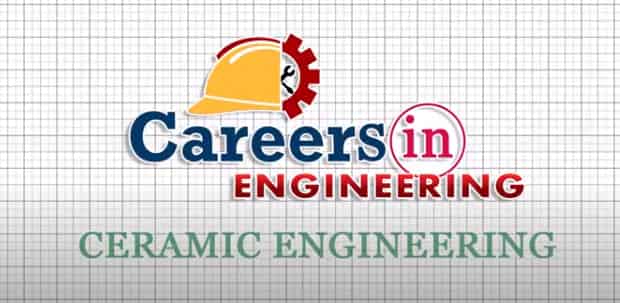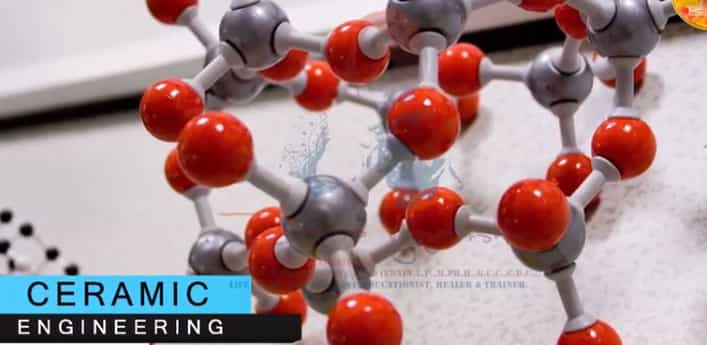It is a technology that involves the manufacturing and designing of ceramic products. Ceramics are nonmetallic, inorganic materials that are baked at high temperatures. Due to its heat-resistant nature, ceramics are demanded more than metals and polymers. In this article, we are going to learn what is ceramic engineering?
They can withstand heat damage very effectively. Until recently, the clays were considered only ceramics. They were used in making pottery, kitchenware, tiles, and bricks. But now, advancements have occurred in the use of ceramics. They are being used in various applications like aerospace, automotive, defense, and ornaments.
What is the history of ceramic engineering?

ABRAHAM DARBY first used coke in 1709. He lived in Great Britain. He used the coke to improve the yield of a smelting process. Coke is widely used for the production of carbide ceramics. Josiah Wedgwood opened the first ceramic factory in England in 1759. Karl Bayer did a process of separation of alumina from bauxite in 1988. The ceramic and aluminum industries still use this Bayers process for the purification of alumina. The key properties of electronics are piezoelectricity.
World war 1 emphasized and created a demand for high-quality material and helped groom the development of ceramic engineering. In the 1970 and 80s, ceramic materials were built, and advancements occurred in atomic energy.
The discovery of ceramic superconductors led the world towards the development of ceramic parts for electronic devices. Materials were studied related to chemistry in the 19th century since ceramics carry a crystalline structure, making a direct link in chemistry.
What are some properties of ceramics?
Ceramic can be generally defined as any inorganic crystalline oxide material. Ceramics are inert. They are brittle, hard, and strong in compression but weak in shearing and tension. Ceramics can prevent any basic or acidic chemical erosion. They can even withstand a temperature of 1000 degrees. Glass is not a ceramic because it is an amorphous solid.
What do ceramic engineers do?
Ceramic engineers have a specialty in material testing and quality checking. He focuses on the production of materials by busing the chemicals. Ceramic engineer makes heat resistant products ranging from spacecraft to optic fibers.
What is the ceramic process?

The ceramics process is defined as all steps needed to finalize the ceramic product for industrial or commercial use. it involves following steps
- Milling
- Mixing
- Forming
- Drying
- Firing
- Assembly.
What is milling?
The process by that materials square measure crushed from an oversized to a little size. It involves ending material having cement as an element. Therefore the individual particles retain t form or pulverization that involves grinding the particles themselves to a smaller size. Pulverization is fracturing the grains and breaking them down.
Mechanical means are used for milling. It includes attrition which involves the collision among particles resulting in agglomerate break of particle shearing. Compression is applied in which compressive forces break or end up fracturing.
The planetary mill is used for attrition. A wet scrubber is an instrument that has paddles in water turn in the opposite direction, which causes two vortexes into each other. Everything present between the vortex collides and gets apart.
What is batching?
It is a process in which oxides are weighed according to the recipe. They are weighed for mixing and drying.
What is mixing?
It involves a variety of equipment such as
- Dry mixing
- Ribbon mixers
- Muller mixers
- Pug mixers
- Wet mixer(involve same equipment)
How forming is done?
Forming implies making shapes of that material. It involves shapes from the toilet bowl to plug insulators.
It may involve slugs to make bricks, press to make shapes. Forming makes a green part for dying purposes. These greenish parts have soft nature, are pliable, and over time will lose shape. Handing over the green product will distort its shape. Squeezed green bricks, and after it has been squeezed, it will stay that way.
What is drying?
Drying is the removal of moisture, water, and blinder material from the formed material. For pressing operations, spray dying is being widely used nowadays. The tunnel dryers and periodic dryers are also in use currently. In drying, controlled heat is applied. In the first step, the heat removes water. This step is carefully controlled. Because in the case of rapid heating, cracks and surface defects occur. The green part is larger than the smaller part.
What is firing?
It is a process in which parts are passed through a controlled heating process, and oxides cause sintering and bonding. The dried part is always greater than the fired part.
How assembly of parts is done?
This step doesn’t apply to all ceramic products. It only applies to those products which require extra subassembly part in the. For example, in the case of a ceramic insulator, an electrode a sub-assembly input into ceramic.
What are some applications of ceramic?
They can be used in many technical applications. Nasa space shuttle uses ceramic tiles to protect itself from the searing heat of re-entry into the earth’s atmosphere. Future supersonic planes will use this facility as well. The optical industry is using ceramics world-widely. There is a tremendous use of ceramics in the electronic industry.
In various engineering cases, ceramics are the best things used as a coating. The titanium frame of the airplane is coated with ceramics. A field of science has studied single crystals or glass fibers. In addition to traditional polycrystalline materials, the applications of these have been overlapping and changing gradually.
What is the use of ceramics in aerospace?
Ceramics make a shield around the engine and protect the plane from damaging other components. In aerospace, the airframe is widely used. They are used as high stress and high temperature also lightweight bearing and frame components. Rocket nozzles have a covering of ceramics that can withstand the exhaust of a rocket booster.
What is the use of ceramics in biomedical?
Ceramic coating is widely being used in artificial bones. A lot of dentistry applications include the use of ceramics coating as an integral part.
What are some uses of ceramics in the electrical industry?
Ceramics are being used in capacitors. the shells around capacitors have ceramic-coated thin films.
All kinds of integrated circuit packages use ceramics. Transducers and insulators use ceramics.
What is modern-day ceramic engineering?
The modern future of ceramic may find value in various industrialization sectors like mining and mineral processing, pharma, and other food and chemical operations.
As an important field of science, a multi-billion dollar year of the industry has established itself. Applications are getting a broad range as researchers develop new kinds of ceramics to serve. Modern life has accomplished a huge number of ceramic products.